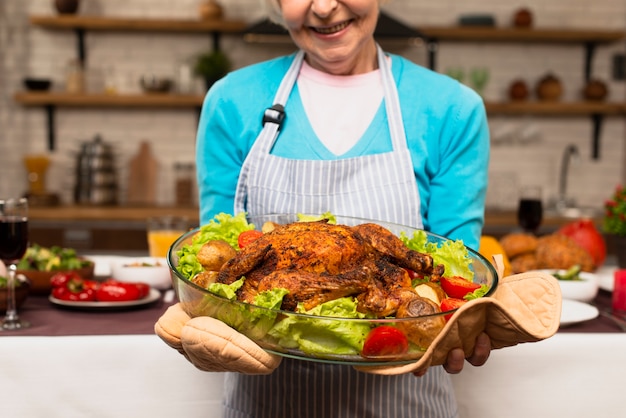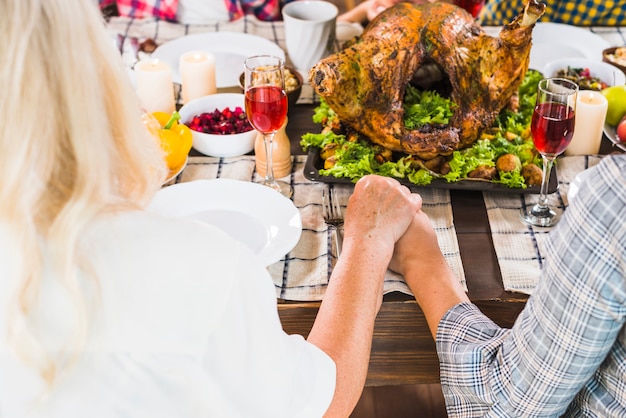The aroma of a perfectly roasted turkey, its golden-brown skin glistening under the festive lights, is a scent that instantly transports us to the warmth and joy of the holiday season. This year, I'm tackling a hefty 22-pound bird, and I’m determined to make it a culinary triumph. I've spent years perfecting my turkey-roasting skills, learning from both successes and (ahem, let's just say) "learning experiences." I'm ready to share my tried-and-true methods with you, because let's be honest, a beautifully roasted turkey is the cornerstone of any festive gathering.
Part 1: The Turkey Selection: Finding Your Star Player

Choosing the right turkey is like casting the lead role in a culinary masterpiece – it's the foundation of a truly delicious experience. You wouldn't build a house on shaky ground, would you? So, head to your local butcher or supermarket and be sure to choose a turkey that's been raised with care.
The Free-Range Advantage: A Commitment to Quality
I always go for free-range turkeys. They've had the opportunity to roam freely, which translates to a more flavorful and ethical bird. You'll notice a distinct difference in the texture and taste.
Bronze vs. White: The Flavor Debate
This year, I'm feeling adventurous and opting for a bronze turkey. They're known for their richer, more intense flavour, and I'm excited to see what it brings to the table. While white turkeys are more readily available and often a bit more budget-friendly, they tend to have a milder flavour. The choice ultimately comes down to personal preference and what you're aiming for.
The Turkey Check-Up: What to Look For
Before you commit to a turkey, take a moment to give it a good visual inspection. You want to ensure it's a healthy, happy bird!
- Firm to the Touch: A well-raised turkey should feel firm to the touch, indicating a good level of moisture and quality.
- Plump Breasts and Drumsticks: Look for plump breasts and drumsticks, which signify a turkey that's been well-fed and cared for.
- Smooth, Even Skin: The skin should be smooth and free of any bruises, cuts, or discolouration.
- Fresh and Clean Scent: The turkey should have a clean and fresh scent – it should smell like, well, turkey! If you notice an off-putting odour, it's best to choose another bird.
Part 2: Preparing for the Roast: Setting the Stage for Success

You've got your turkey – now it's time to get prepped! This is where a little planning and organisation will make your life so much easier.
1. Thawing Time: A Gradual and Safe Process
A frozen turkey takes time to thaw, so don't leave it until the last minute! I usually allow a day for every five pounds of turkey, so for my 22-pounder, that's about four and a half days.
- Refrigerator Thawing: The safest and most gradual way to thaw your turkey is in the refrigerator. It takes longer, but it's worth it for the consistency of the meat. Place the turkey on a large, shallow dish to catch any drips.
- Cold Water Thawing: If you need to thaw your turkey more quickly, you can submerge it in a large bowl of cold water, ensuring the turkey is completely submerged. Change the water every 30 minutes to keep it cold. This method can cut down the thaw time significantly, but remember, it's always best to err on the side of safety.
2. Brining: A Secret Weapon for Juicy, Flavorful Turkey
Brining is a game-changer for turkey! It involves soaking the turkey in a salt solution, which helps to retain moisture, making your roast incredibly juicy, and it also infuses the turkey with delicious flavour. Think of it as a culinary hug for your bird!
- Basic Brine: Mix together 1 cup of kosher salt, 1 cup of sugar, and 1 gallon of water. Submerge the turkey in the brine for 12-24 hours.
- Flavored Brine: For a more complex and flavorful brine, add aromatics like herbs, spices, or citrus zest. Lemon, thyme, and garlic are classic combinations. You can even experiment with different flavor profiles. For example, try a rosemary-orange brine for a festive twist.
3. Setting the Stage: The roasting pan and the Art of Presentation
Make sure you have a roasting pan large enough for your turkey. Don't worry if it's a bit cramped; just make sure the breasts are level and the wings are tucked in.
- Roasting Rack: A roasting rack elevates the turkey, ensuring even cooking and preventing the bottom from sticking. It also allows hot air to circulate around the bird, resulting in a crispier skin.
- Pan Drippings: Don't discard those pan drippings! They're pure gravy gold.
Part 3: The Big Day: Roasting the Turkey to Perfection

The day has arrived! It's time to unleash your inner chef and roast that turkey to perfection.
1. Pat it Down: Getting Rid of Excess Moisture
Before you start roasting, pat the turkey dry with paper towels. Excess moisture can lead to a soggy bird, and we're aiming for a beautiful, crisp skin.
2. Seasoning is Key: Don't Skimp!
Don't be afraid to season generously. A good rub of salt, pepper, and paprika is a classic, but get creative with your spices! I like to add a touch of garlic powder and onion powder, or even a sprinkle of dried herbs. You can also rub the skin with a mixture of butter and herbs for a truly decadent flavour.
3. roasting time: The Big Reveal
Now, the moment of truth! Slide the turkey into your preheated oven (325°F / 165°C) and set the timer. I usually allow 13-15 minutes per pound for an unstuffed turkey, so for my 22-pounder, that's about 286-330 minutes, or 4-5 and a half hours. But hold your horses, there's more!
4. turkey basting: A Little TLC for That Golden-Brown Finish
About halfway through the roasting time, I like to baste the turkey with its own pan drippings. This helps keep the skin moist, adds a beautiful golden brown colour, and infuses the turkey with even more flavor.
5. Temperature Check: It's All About the internal temperature
The most reliable way to tell if your turkey is cooked through is to use a meat thermometer. You want the internal temperature to reach 165°F / 74°C in the thickest part of the thigh. Don't rely on just visual cues; a thermometer is your best friend.
6. Rest Time: Let the Turkey Relax and Redistribute its Juices
Once the turkey reaches the desired temperature, take it out of the oven and let it rest for at least 30 minutes before carving. This allows the juices to redistribute throughout the meat, resulting in a juicier and more flavorful bird.
Part 4: Carving Time: A Culinary Ballet
Time to unveil the masterpiece! carving a turkey can seem intimidating, but it's really just about a few simple steps.
1. Gather Your Tools: Sharp Knife, Cutting Board, Serving Platter
A sharp knife is a must! It makes slicing through the turkey a breeze. I also find it helpful to have a large cutting board and a beautiful serving platter to present the finished product.
2. The First Slice: Breasts and Legs
Start by slicing off the breasts. Work your way around the bones, carefully removing the meat. Next, cut off the legs and thighs, separating them from the body.
3. Slicing the Breasts: Thin and Elegant
Slice the breast meat thinly, against the grain. This creates beautiful, even slices that are easy to carve and eat.
4. Presenting the Feast: A Culinary Showcase
Arrange the carved turkey on your serving platter, creating an impressive presentation. You can add garnishes like herbs, fruit, or vegetables for a touch of elegance.
Part 5: Gravy Time: A Delicious Sidekick
No turkey dinner is complete without a rich and flavorful gravy.
1. Don't Toss Those Drippings: They're Gravy Gold!
Remember those pan drippings we mentioned earlier? They're the secret ingredient to a delicious gravy.
2. The Deglazing Process: Unlocking Flavor
Add a little flour and water to the pan drippings and bring to a boil, scraping up the browned bits from the bottom of the pan. This "deglazing" process releases the rich flavor that has been infused into the pan.
3. Flavor Boost: Herbs and Spices
For a more complex flavor, add herbs and spices like thyme, rosemary, or garlic powder.
4. Season to Perfection: Taste and Adjust
Remember to taste your gravy and adjust the seasoning as needed. Salt, pepper, and a pinch of sugar can help to balance out the flavors.
Part 6: The Sides: Complementary Flavors
A turkey roast deserves the best supporting cast!
1. Classic Comfort: mashed potatoes
creamy mashed potatoes are a classic side dish that complements the turkey perfectly.
2. Thanksgiving Staple: Stuffing
Stuffing is a must-have for any turkey dinner. There are endless variations, but I always go for a classic sausage and herb stuffing.
3. A Burst of Flavor: Cranberry Sauce
A tart and tangy cranberry sauce is the perfect counterpoint to the savory turkey.
4. Green Bean Delight: Roasted green beans
roasted green beans are a simple but delicious side dish that adds a touch of freshness to the meal.
5. sweet potato Surprise: roasted sweet potatoes
For a touch of sweetness and color, try roasting sweet potatoes with a drizzle of maple syrup and a sprinkle of cinnamon.
Part 7: Leftover Magic: Turkey Transformation
Don't let those turkey leftovers go to waste! They are a culinary treasure trove, ready to be transformed into delicious new dishes.
1. turkey sandwiches: A Classic Comfort
Slice the leftover turkey and assemble delicious sandwiches. Add a little mayonnaise, mustard, lettuce, and tomato for a classic turkey sandwich.
2. turkey soup: A Hearty and Flavorful Meal
Make a flavorful and comforting turkey soup with leftover turkey, vegetables, and broth.
3. turkey salad: A Lighter Option
Combine leftover turkey with mayonnaise, celery, onion, and herbs for a refreshing turkey salad. Serve on bread or crackers.
4. Turkey Pizza: A Delicious Twist
Use leftover turkey to top a pizza for a fun and flavorful dinner.
5. Turkey Enchiladas: A Southwestern Surprise
For a unique twist, try making turkey enchiladas with leftover turkey, salsa, cheese, and tortillas.
Part 8: A Note on Safety: food safety First!
It's essential to handle your turkey safely to prevent foodborne illness.
1. Proper Thawing: Don't Rush the Process
As mentioned earlier, always thaw your turkey safely in the refrigerator or in cold water. Never thaw a turkey at room temperature.
2. Internal Temperature: Don't Undercook the Turkey
Make sure to cook your turkey to an internal temperature of 165°F / 74°C. Use a meat thermometer to ensure accuracy.
3. Refrigerate Leftovers: Keep Them Safe
Refrigerate any leftover turkey within two hours of cooking.
4. Handwashing: A Crucial Step
Wash your hands thoroughly with soap and water before and after handling raw turkey.
5. Cross-Contamination: Keep Raw Turkey Separate
Avoid cross-contamination by using separate cutting boards and utensils for raw turkey and other foods.
FAQs
Let's answer some frequently asked questions about turkey roasting.
1. How do I know if my turkey is done?
The most reliable way to tell if your turkey is done is to use a meat thermometer. The internal temperature should reach 165°F / 74°C in the thickest part of the thigh.
2. Can I stuff my turkey?
You can stuff your turkey, but it's not recommended. Stuffing cooked inside the turkey doesn't reach a safe internal temperature as quickly. If you choose to stuff your turkey, ensure it's cooked to a safe internal temperature of 165°F / 74°C.
3. What if my turkey is too big for my roasting pan?
If your turkey is too big for your roasting pan, you can roast it on a baking sheet lined with foil. Just make sure to lift the turkey occasionally to ensure even cooking.
4. How long can I keep leftover turkey in the refrigerator?
You can store leftover turkey in the refrigerator for up to 3-4 days.
5. What's the best way to reheat leftover turkey?
The best way to reheat leftover turkey is in the oven at 325°F / 165°C until it is heated through. You can also reheat it in the microwave, but it might become a bit dry.
I hope this comprehensive guide has equipped you with the knowledge and confidence to roast the perfect turkey. Remember, the key is to choose a quality turkey, prepare it properly, and cook it to perfection. With a little care and attention, you'll be serving up a delicious and unforgettable holiday feast. Happy holidays!
Everyone is watching

How to Cook Frozen Lobster Tails Perfectly: A Step-by-Step Guide
RecipesLobster. Just the word conjures up images of lavish meals, special occasions, and a taste of luxury. But let's...

Pigs in a Blanket Cooking Time: How Long to Bake for Perfect Results
RecipesAh, pigs in a blanket. Just the name conjures up images of those delightful little parcels of crispy pastry en...

Pork Fillet Cooking Time: How Long to Cook It Perfectly
RecipesPork fillet, or tenderloin as it's sometimes called, is a real favourite in our house. It's so versatile, and...

The Ultimate Guide to Cooking Delicious Frankfurters
RecipesLet's face it, we all love a good frankfurter. It's a classic, simple, and always satisfying. But let's be rea...

The Ultimate Guide to Tender, Juicy Pulled Pork
RecipesRight, let's talk pulled pork. It's one of those dishes that just screams "comfort food," doesn't it? I mean...
